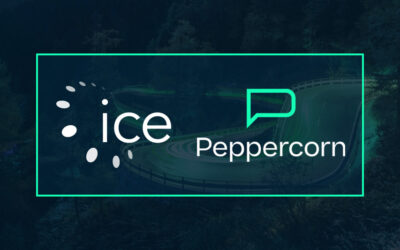Often a company is working on applications less smart than the average mobile phone! Disconnected, slow, clunky with workflows and work distribution that do not mirror the requirements of the modern organisation. And don’t even get me started on connectivity, mobile devices and data exchange. This doesn’t apply to every organisation of course. Some of the new entrants to the market are using the latest technology to great advantage – let’s hope they have selected something which can be configured easily and can be upgraded regularly with minimal effort.
They say that time does not stand still, but in parts of the insurance industry it has, or at least the clock has ticked very slowly for some. I started work in the insurance industry in the City of London in 1984 for what was then one of the largest Insurance Brokers in the country at the tender age of 17. As a boy from the country it was incredibly exciting and “modern”. The buzz of the City, office blocks, people in suits – a different world to the one I was used to.
Very quickly into the job the routines started – opening the post twice a day, date stamping it, handing it out. Dictating letters into a Dictaphone and taking them to the typing pool before taking the finished correspondence to the post room for dispatch. Hand writing motor insurance cover notes and manually calculating insurance premiums from the dreaded rating books! Answering the telephones and then that frantic search to find the correct file, putting the caller on hold while wading through weeks of correspondence to find the current position. Writing the file name into a central diary for any follow up activity.
Then the highlight of the month – several of us spending an entire week or more compiling operational and corporate reports for both internal and external use. And of course, whilst the external reports broadly contained the same information, each client wanted the data in a slightly different format.
How times have changed…. Or have they?
These days the technology is there to streamline most if not all of today’s processes; whether it be underwriting and policy administration, or claims administration. Powerful tools exist for extracting key data and presenting it in a variety of formats. So, what is the problem? The problem has been the pace of change. Those companies that embraced this “new” software and technology even 5 years ago are finding that they are left with “new” legacy systems, despite eye wateringly staggering sums being spent on licence and implementation costs. This has led to a legacy of hugely inefficient system implementations, rarely completed on time and on budget, that subsequently left the organisation with a system that is not upgradable due to the extensive customisation applied, or that required specialist skills or developers to change and amend.
Analogue to Digital
For many companies, however, as I walk round the office I see the same or similar issues – use of multiple different systems to manage simple processes; lack of access to key information to understand the current position; customers on hold whilst the “system catches up” and manual work distribution being prioritised and distributed by an overworked team leader or supervisor. Sure, the front end now looks modern and money is spent liberally on advertising and ensuring premiums are calculated in record times, but look beneath the surface and many of the problems of 30 odd years ago still exist.
And yes – I still come across small armies of people spending two weeks every month preparing exactly the same reports as the previous month. Often the data is all there – extracting it in a meaningful way is another matter entirely.
Are you ready for the future?
The future of software can never be predicted as it is constantly evolving, not just in the insurance industry, but also in other financial services. There are a set of key features that I think you should be prioritising when you are looking for a new insurance software solution, and I have listed five of these below, in no particular order, to give you something to mull over:
- Scalability and Flexibility of Scalability: The days of enforcing specific hardware requirements to deliver an insurance solution are thankfully a thing of the past now. A modern and capable insurance software solution should offer flexibility in its installation, allowing either cloud or on-premise deployment depending on customer preference. The app should ideally run in a browser, and run as a native browser application and not via some inefficient middleware or wrapper.
- Modern UI / UX: We have become accustomed to advanced user interface design and user interaction partially as a result of the proliferation of smartphone technology. A fast, well thought out, and fully resolution responsive UI can save a significant amount of time and cost by streamlining a user’s workflow and decreasing training times. The UI should offer sub second responses, much like a traditional web browsing experience and not a page turn slower than the book and quill pen used in that first Lloyds coffee shop in the 17th century…
- Speed of Implementation: This is major deal for not only insurance companies but also members of the insurance supply chain. The complexity of insurance systems and legacy system replacement has historically meant multi-year implementations were not uncommon. A modern insurance software solution should be capable of implementation in less than 6 months from start to finish.
- Out of the Box Reporting and configurable MI: Leading practice report templates are essential for the speedy implementation of an “out of the box” system. The insurance audience is accustomed to sophisticated MI dashboards and any system that doesn’t feature a set of pre-defined reports and a tailorable MI interface is lacking.
- Telematics/IoT: Telematics and the connected car and home are a reality, and to take benefit of these advances in hardware, you should pick a system that has a proven track record of interfacing and using telematics or IoT hardware in the field. Be very wary of the implementation timescales of any system that has not been proven to work with a telematics system except under laboratory conditions.
Hopefully these pointers will give you a few key areas to evaluate your next insurance system against and help avoid you making some of the mistakes “from a bygone era” that I sometimes see repeated in other organisations.
For more information, contact ICE InsureTech
More articles
Peppercorn insurance wins first Celent Model Insurer Award with ICE
Peppercorn insurance is ICE’s first client to win the Celent Model Insurer Award for Digital and Emerging Technology. Their well-deserved success has set a new industry standard on how AI can support digital transformation in insurance.
PeppercornAI & ICE InsureTech Announce Partnership
Insurtech PeppercornAI announced their first strategic partnership with ICE InsureTech that will support rapid digital transformation in the insurance industry.
Kindertons launches its big ICE roll-out at the same time as going live on Acturis
Kindertons transforms operations with new launches powered by Acturis & ICE InsureTech, both integral companies in the Acturis Group.




